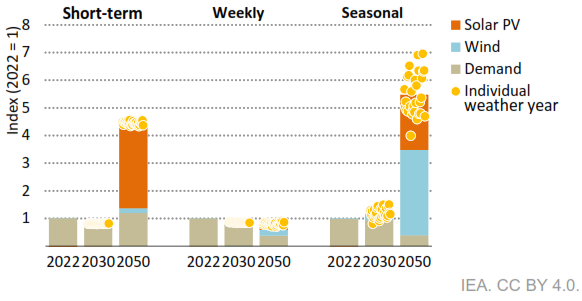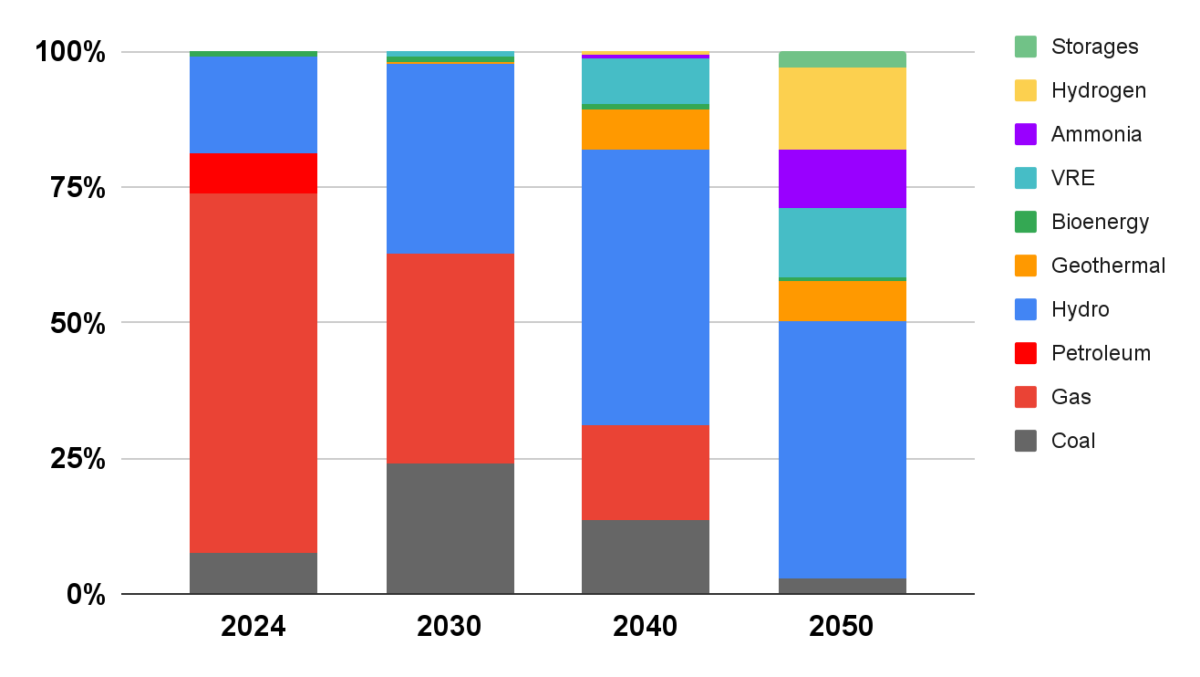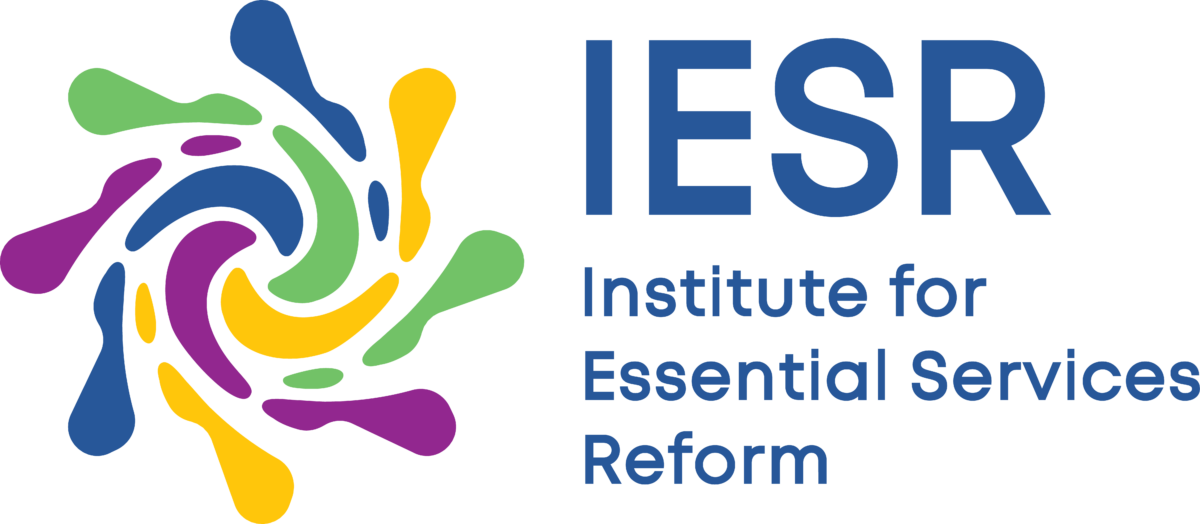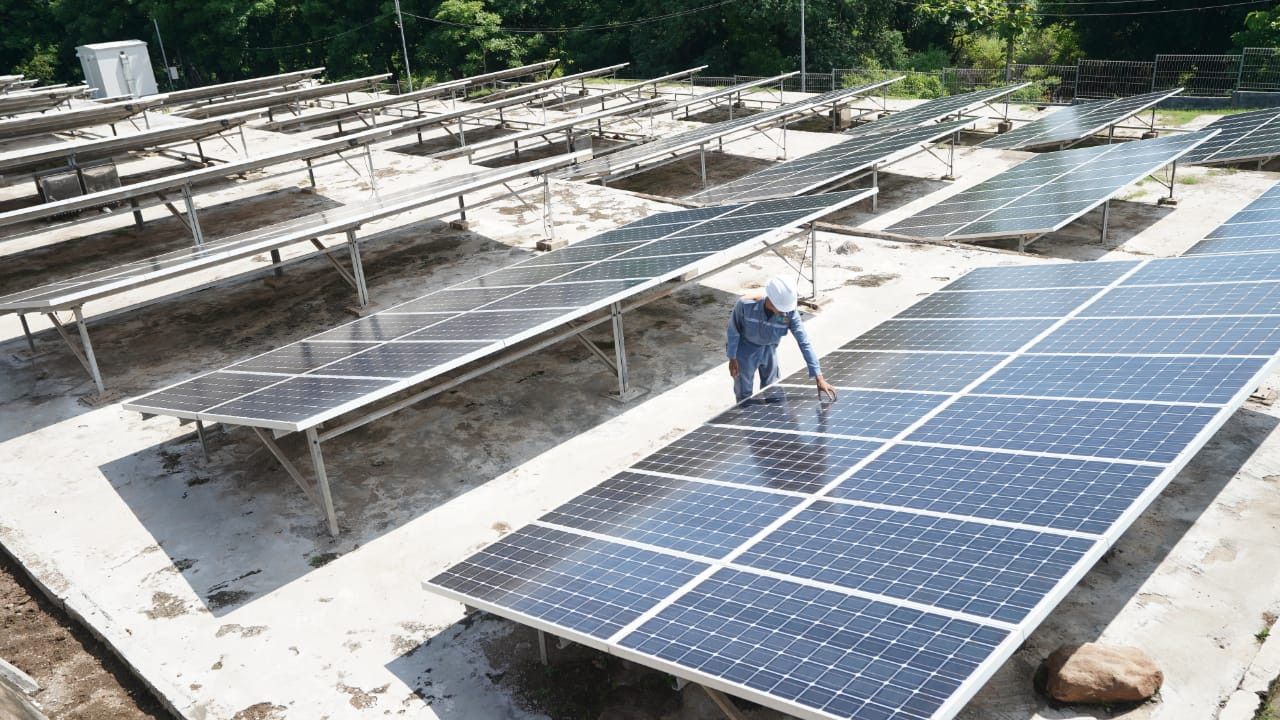The global goal of tripling renewable energy capacity to 11 TW by 2030, declared at COP28 in Dubai, must align with the 1.5°C Paris Agreement target. While progress in most renewable sources is slow, solar energy stands out as the only one on track, with projected annual capacity additions of 1 TW between 2024 and 2030 (Renewable energy statistics 2024). This rapid growth is shaping national energy policies worldwide, with current targets forecasting that solar will account for 43.6% of global renewable capacity by 2030 (2030 Global Renewable Target Tracker | Ember). untapped energy
Solar energy’s role in the energy transition in Indonesia is increasingly important. The upcoming National Energy Policy (KEN) draft reflects this shift, setting ambitious targets. The July 2024 draft outlines solar’s contribution of 1.6% to the primary energy supply by 2030 and 32% by 2060, a significant leap from the 2017 RUEN targets. This equates to a minimum of 7 GW of installed solar by 2030 and 309 GW by 2060. However, recent discussions in the May 2024 RUKN draft propose a more modest target of 14 GW by 2030 and 134 GW by 2060, falling short of the MEMR NZE Roadmap and KEN’s ambitious vision (Indonesia Solar Energy Outlook 2025 – IESR).
Flexibility: The Key to VRE Integration
Effective integration into the power grid is crucial to harness the full potential of solar PV and wind energy. Unlike traditional energy sources, Variable Renewable Energy (VRE)—such as solar and wind—introduces supply variability, dependent on weather conditions. To manage this variability, the power system must become more flexible across all stages, from generation to consumption.
System flexibility can be enhanced through dispatchable generation, grid upgrades, energy storage, and demand response. A flexible system will maximize the secure and affordable use of renewable energy, reduce dependency on fossil fuels, and minimize costly measures needed for system stability.
Indonesia’s Flexibility Pathway
The International Energy Agency (IEA) outlines six phases of VRE integration, based on the share of VRE in the grid and the challenges that arise at each stage (Integrating Solar and Wind – Analysis – IEA). This framework allows countries to assess their readiness for higher VRE levels and identify solutions to maintain grid stability.

Figure 1. Evolution of Indonesian Flexibility needs and their drivers (Managing Seasonal and Interannual Variability of Renewables – Analysis – IEA)
Currently, Indonesia’s power system flexibility is largely driven by variations in electricity demand, given the low share of VRE in the grid (Managing Seasonal and Interannual Variability of Renewables – Analysis – IEA). However, as VRE penetration increases over time according to the latest RUKN draft—flexibility needs are rising. While the system currently shows low seasonality, this will change as the share of VRE continues to grow.

Figure 2. Indonesia Ramping Flexibility Sources Projection
Our modeling, based on the latest RUKN draft, illustrates how Indonesia’s flexibility supply will evolve. The country will increasingly depend on conventional clean flexibility sources, especially hydropower. Hydropower will play a critical role in reducing reliance on fossil fuels like coal and gas while complementing emerging energy sources like ammonia and hydrogen, which can operate similarly to traditional fossil-based power plants. Additionally, battery storage will be essential in ensuring year-round flexibility.
For island and quasi-island systems like Indonesia’s, maintaining a short-term supply-demand balance and ensuring frequency stability is particularly challenging due to limited flexibility resources. According to the IEA’s stocktake analysis (Integrating Solar and Wind – Analysis – IEA), efforts to increase system flexibility are underway. Key measures include:
- Enhancing conventional power plants to adjust their output more quickly.
- Establishing capacity mechanisms to keep them operational.
- Setting stricter technical standards for VRE plants.
- Expanding demand response programs to include commercial and residential customers.
- Leveraging the fast-acting capabilities of technologies like battery energy storage systems (BESS).
Additionally, improving forecasting for VRE generation and net load is a priority to minimize the need for additional flexibility due to VRE uncertainty.
Challenges related to VRE integration should not be seen as barriers to expanding capacity, especially for countries like Indonesia that are in the early phases of VRE adoption. The relatively low system-level impacts of VRE in these early stages, combined with the availability of cost-effective integration measures, offer an opportunity to scale up renewable energy deployment without compromising system stability. By implementing core integration strategies alongside VRE expansion, Indonesia can accelerate its clean energy transition and build a more resilient, sustainable power system.

